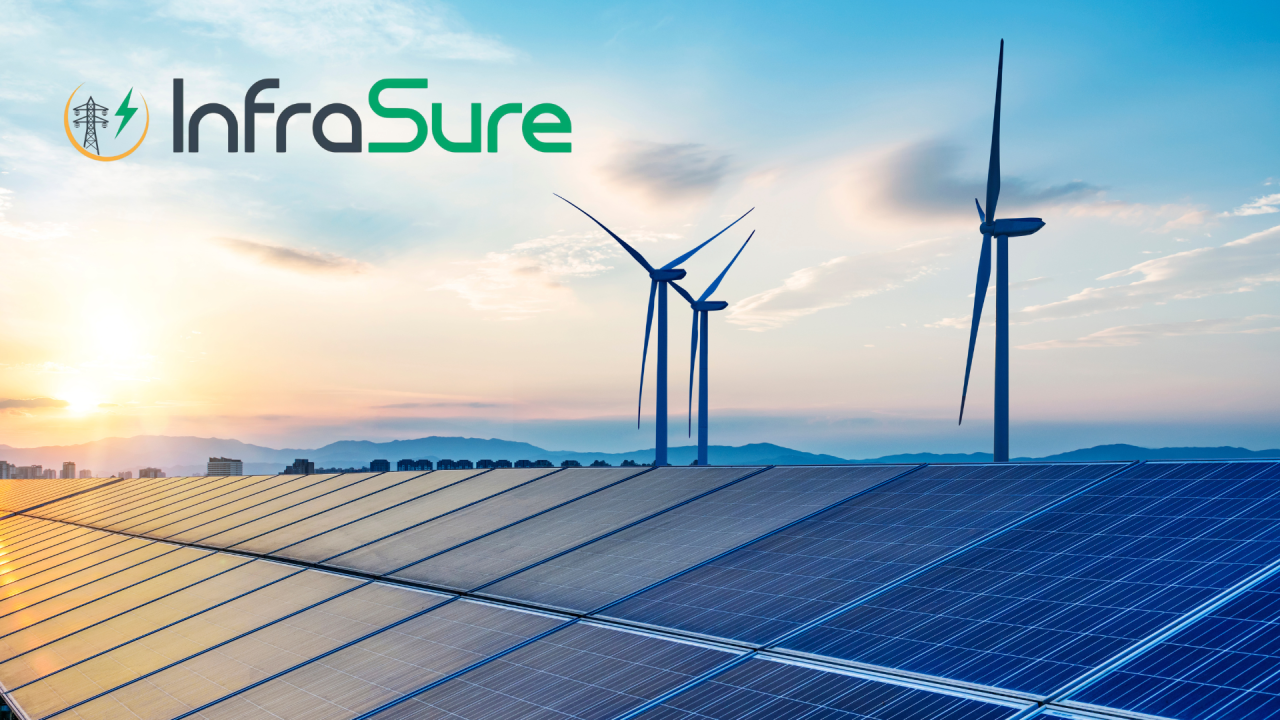
As the world shifts toward cleaner energy, understanding how climate affects solar and wind power becomes essential. At InfraSure, we specialize in transforming complex climate data into actionable insights that help energy operators, investors, and planners manage risk and improve system reliability.
Here’s how large-scale climate patterns shape the monthly renewable power generation in the U.S.
Solar Energy: The Cloud Cover Connection
Solar panels rely on sunlight to generate electricity, but the amount of sunshine varies across seasons and regions. This variation is not random — it’s driven by climate systems that influence cloud cover, precipitation, and moisture in the air.
- Southwest U.S. = Stable Sunlight. The Southwest enjoys consistent sunshine and minimal rainfall, making it ideal for solar power.
- California & Texas = Seasonal Swings. These high-potential regions experience wintertime dips in sunlight due to storm systems and cloud cover.
- Southeast U.S. = Rain-Driven Variability. Frequent rainfall leads to higher fluctuations in solar energy generation.
Our climate analysis identifies key atmospheric patterns that drive these variations. For example, systems like El Niño, the West Mode, and the QBO (Quasi-Biennial Oscillation) affect moisture transport and cloud formation, altering solar power output seasonally.
Wind Energy: Powered by Air Pressure and Motion
Wind energy depends on the movement of air, which is shaped by pressure differences and large-scale circulation patterns.
- Great Plains = Strong & Steady Winds. The central U.S. features flat terrain and strong low-level jet streams, making it a hotspot for wind energy.
- Higher Month-to-Month Fluctuations. Wind speeds can vary significantly, even in high-potential regions.
Climate Patterns That Matter:
- El Niño often weakens wind speeds in the southern U.S. and central Great Plains (both the mean wind and the high-frequent wind variation). The North Pacific Oscillation (NPO) has a similar effect with ENSO despite an eastward shift of the circulation centers.
- West Mode influences north-south (meridional) wind flow, changing wind power generation.
These shifts don’t shut down wind farms, but they do lead to significant fluctuations in monthly or seasonal output — something energy planners must account for.
Why Understanding Climate Matters
Climate variability already affects clean energy generation. Recognizing and planning for this variation helps us:
- Design more resilient energy systems
- Improve investment and operational planning
- Reduce risks from seasonal dips or climate-driven hazards like hail, gusts, and tornadoes
At InfraSure, we build tools that turn climate data into clear, usable guidance. Whether you’re managing wind farms in the Plains or deploying solar in the Southwest, we help ensure your clean energy remains predictable, bankable, and strong — even in a changing climate.
Want to learn how climate-smart energy planning can support your goals? Contact InfraSure today for tailored insights and data solutions.
Figure 1: a) Annual mean incoming shortwave radiation (contours in W/m2) and its standard deviation (shading) based on monthly dataset. b) a schematic diagram showing the climate modes influencing the shortwave radiation over different regions of U.S.

Figure 2: Similar to Figure 1, but for wind energy

